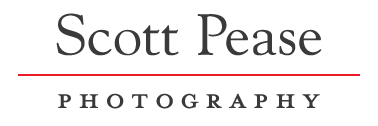Recently I was contacted by a client/architect friend Ron Cocco of Clark & Post architects of Lorain, Ohio to photograph a new installation of Art Glass in a pedestrian bridge between two buildings located at Lorain County Community College in Elyria, Ohio. The artist, Shen Shen Sheng an internationally renowned artist from San Francisco CA was retained as the creator of this beautiful piece of Art Glass for the college.
Like most projects this one started with a walk through to see the project. I was surprised to find that the scope of this installation was much larger than expected and right away I anticipated the need to have some additional help in the production of this project. The bridge portion of the installation was approximately 100 feet across with the remainder of the art glass extending another 85 feet into the next section of the building! Total length of this art work 185 approximately!
I also learned that the lighting in the pedestrian bridge itself was rather poor and the photography could not rely on this lighting alone. This would require extensive lighting and a lot of it. I contacted one of the local stage lighting firms in my area to explain the project and schedule a walk through with them.
Derek Hons of Vincent Lighting Systems Company in Cleveland, OH meet with me at the site to look at the project and see what the best plan of attack would be. We decide that what was needed was a series of high output LED lighting fixtures evenly spaced along the floor of the bridge and into the adjoining space beyond and in one section of a lower level stairwell. In total it would require twelve lights which would all be connected to a central control board. Each light could be controlled separately to make the necessary adjustments for intensity and color balance. This proved to be an excellent choice of lighting as the art glass needed to have a lot of light plus some color enhancement to saturate specific colors.
The shoot was scheduled to happen at dusk to take full advantage of the brilliant colors of the glass as well as having a beautiful cobalt blue sky behind the building. As we move into the early stages of the winter the sun is dropping rapidly in the sky during the latter part of the day and the dusk hour itself is extremely short. The sunset the day of our shoot would start at 5:14 p.m. and be at it's best around 5:25 to 5:45 p.m. I did shoot beyond 5:45 but the sky was getting rather black and the roofline of the building was starting to fade into the night and with no lighting on the building itself I was done shoot by 5:50 p.m.
The lighting process had began at 1 p.m. the day of the shoot with Derek and two assistants Ben Starett and Chris Myers arriving with the gear. It took about 2.5 hours to string all the lights together at the control board. Each light was then tested a number of times. Once this had been completed we had some time to consider some of the potential issues we might encounter during the shoot. We realized that the direction of the lights might need to be adjusted as there was no way to do this during the daylight hours. Each person including myself was outfitted with a two-way radio so that I could communicate to the assistants which of the twelve lights needed to be adjusted. This also included altering the color balance of a few lights to enhance the color of the glass. This would all have to take place moments prior to the optimum ambient light of the dusk hour. I actually had to make several corrections during the shoot but this seemed to go quickly with no real problems.
During the shoot I also realized that the passing cars created a bit of a distraction. Normally when photographing a building at dusk I try to have some of this action to create the feeling of movement but in this case it really took away form the subject matter. Fortunately there were not that many cars but I did have to wait several times during the shoot to let passing cars get out of the frame.
I was also aware from my test shots a few days earlier I would be getting some flair on they camera lens from a couple of streetlights specifically from two angles where the streetlights were just out of the frame but still spilling their ultra bight LED light onto the camera lens. I had to rig my tripod with two Manfretto magic arms with black card to shade the lens from these lights. It worked very well but added several pounds to my camera rig. In the end no flair mission accomplished!
All in all this was a very rewarding assignment as it required some thought as to how to handle this huge long piece of art. Many years of studio and location assignments made this shoot a success and I have nothing but good things to say about everyone who helped out.











